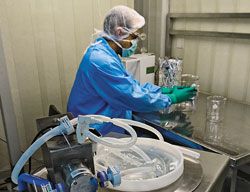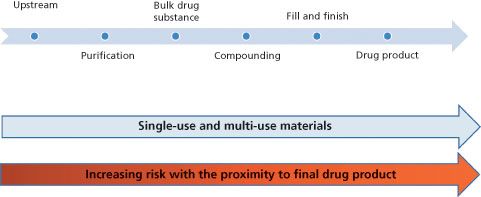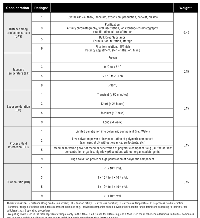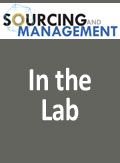Evaluating E&L Studies for Single-Use Systems
PTSM: Pharmaceutical Technology Sourcing and Management
Extraction studies demonstrate approaches for evaluating single-use bio-pharmaceutical manufacturing materials.
Photo courtesy of Merck Serono Aubonne

Biopharmaceutical companies have increased the adoption of single-use systems (SUS) and components (i.e., polyethylene bags, filters, tubing, connectors, etc.) for manufacturing processes, in addition to multi-use (MU) materials (i.e., glass bottles, stainless steel tanks, etc.) (1). Regulatory guidelines require that the product contact items “shall not be reactive, additive, or absorptive” to assure drug product quality and safety (2). The manufacturer is, therefore, responsible to examine various materials used in manufacture of both drug substances and drug products to ensure that the materials are appropriate in terms of efficacy (process performance and product quality) and safety for the final drug product.
Suppliers are advised by the BioPhorum Operations Group (BPOG) and Bio-Process Systems Alliance (BPSA) to provide comprehensive extractables test data. Many companies have now adopted the BPOG extractables protocol (3) as their user requirement.
Extractables and leachables evaluation
An extractables and leachables evaluation should begin with a risk assessment of the materials to determine whether there is a significant risk that may require additional studies on all or part of the product contact materials (4).
A risk rating is determined by applying three main factors: the severity of the harm caused by substances leaching from the manufacturing component; the probability that leaching will occur; and the probability of detecting the leached substances through in-process manufacturing controls.
The risk analysis of each product contact material used in the process takes into account variables including:
- Proximity to the API/drug substance and final drug product
- Extraction capability of the solvent/solution
- Contact time
- Temperature
- Product contact surface area
- Material pre-treatment
- Material compatibility/resistance.
It is presumed that any impurity entering the production stream can have a negative impact on the product quality and the severity of such a failure mode is considered to be high. A process-specific assessment takes into account the production stream in which the component is used in, and accordingly, it assigns a risk rating. As the production process advances towards the final drug product state, the risk to the patient, represented by any leachable, increases (Figure 1). Therefore, polymeric components used in process steps closer to the drug substance or the drug product will carry a higher risk rating compared to the earlier steps of the process. For example, a bag or a filter used for the final filtration of bulk drug substance will have a significantly higher rating compared with the components used in the upstream process steps.
Figure 1. Distance along the production stream.

CLICK TABLE TO ENLARGE Table I. Example of risk assessment from BioPhorum Operations Group (5).

The BPOG Best Practices for Mitigating Risk from Leachables in Single-Use Systems suggests a risk assessment rating (5) that companies can use to develop their own risk assessments (see Table I) (5). The risk ratings of each factor will be weighted as in the BPOG example and summed to obtain the final risk score that is then categorized as low, medium, or high. If the risk is classified as low, it may be sufficient that the material meets the compendial requirements. If the risk is medium, in addition to the low-risk requirements, the company should evaluate available extractables data from the supplier, or generate in-house study data for a toxicological risk assessment. If the risk is classified as high, in addition to the medium risk requirements, a process-specific leachables risk assessment must be carried out; if data are not available from the supplier, or the data do not correspond to the processing conditions, a dedicated extraction study and/or leachables study will be necessary.
A dedicated extraction study representative of the processing conditions should define the worst case in-use parameters in terms of type of solvents, duration, and temperature of contact, and surface-to volume ratio.
Finally, the definition of the study design is a very important and crucial step. Different extraction study design options are available for the manufacturing process contact materials:
- Perform an extraction study on the process parts as an on-site assembly (i.e., for each process step, combining all the materials included in each skid).
- Perform an extraction study singularly on each product contact material part, eventually bracketing materials of the same type/composition.
- Reproduce a small-scale assembly of the manufacturing process, which includes the most at risk materials (based on preliminary risk assessment).
CLICK TABLE TO ENLARGE Table II. Advantages and difficulties of the different extraction study designs.

These approaches have been applied in three different case studies and are summarized here, highlighting the advantages and the difficulties of each extraction study design option (Table II).
It is important to note that the case studies described in this paper are not to be intended in contrast with BPOG Standardized Extractables Testing Protocol for SUS in Biomanufacturing, which Merck adopted as single-use requirements. The extraction and leachables simulation study conditions presented here were designed to compensate for the insufficient/inadequate extractables data supplied by vendors and were intended to mimic the worst-case scenarios of use of the materials for their intended application within the company’s specific manufacturing processes.
Analytical methods
In the three case studies, the following analytics were applied:
- Headspace sampling/gas chromatography/mass spectrometry (HS/GC/MS) and gas chromatography/mass spectrometry for volatiles and semi-volatiles
- Ultra-high performance liquid chromatography/MS/MS for semi-volatiles/non-volatiles
- Graphite furnace atomic absorption spectroscopy (GF/AAS) for silicone
- Inductively coupled plasma-mass spectrometry (ICP-MS) for elemental impurities
- Total organic carbon (TOC) on aqueous extracts only.
On-site assembly extraction study
The on-site assembly option was applied to a downstream manufacturing process. Due to the complexity of the equipment and the single-use and multi-use materials involved, the extraction study was carried out by bracketing the different skids separately, according to the worst-case in-use conditions of each specific purification step, following the risk assessment. Extractables studies on the chromatographic resins were already available from the vendors so all resins involved in the purification process were disconnected and excluded from the extraction study, thus simplifying the study.
CLICK TABLE TO ENLARGE Table III. Extraction study design for option 1, on-site assembly for downstream processing. BPOG is BioPhorum Operations Group.

The worst-case organic and aqueous solutions selected as model solvents for the process skids extraction were the following: ethanol 20% in water, acetonitrile 50% in water, acetonitrile 50% with 0.1% trifluoroacetic acid (TFA), sodium hydroxide (NaOH) 0.1M and 0.5M, and a solution of NaOH 0.5M and sodium hypochlorite (NaClO) that was used to sanitize the line (Table III). These solutions were recirculated in each skid for a few hours up to seven days at normal process temperature, then sampled and analyzed by performing the different techniques. The reference solutions, before starting the recirculation process, were sampled and tested as well.
Analytical studies detected a variety of volatile and semi-volatile organic compounds; several plastic/rubber additives such as phenolic antioxidants; plasticizers (e.g., phthalates/adipates); amides, and other plastic/rubber formulation related components (e.g., residual solvents, silicon polymers, glycols, and alkanes).
Having extrapolated from what was detected in the study to the real-case conditions of use of the process materials (namely, by taking into account the dilution factor), a safety assessment was made considering the daily dose of the final product (<1 mL in this case). The result was that the potential daily exposure of the patient to the species detected in this extraction study was below 1.5 µg/day, which is the safety threshold for genotoxic impurities. Therefore, no safety concern was determined for the materials used within the process.
Critical aspects and lessons learned
This experiment raised some difficulties within the execution and the analytics, and revealed some lessons learned:
- Due to the impact of contamination from the on-site solution preparation step (e.g., contact with plastic bags/bottles), there is a need to establish the right mindset within the manufacturing site.
- Many artifacts and analytical interferences were generated by strong/reactive solutions (as NaOH/NaClO), causing difficulties in the analyses and data interpretation; the use of strong saline/reactive solutions should be reconsidered and replaced with fit-for-purpose solutions.
- The impact of the already-used materials should be taken into consideration. Traces of residual compounds from previous manufacturing runs and from cleaning processes (e.g., ethanol) were also detected.
Single-parts extraction study
The single-parts option was applied to fill/finish manufacturing process parts. New parts (e.g., tubing, gaskets, valves, connectors, etc.) were used and extractions were done singularly within the laboratory, without involving the entire production area. Therefore, this option seemed simpler to perform. Furthermore, as most of the materials are used in different processes, a goal of the study was to use the extraction profile obtained from each material for all other processes in which the same material was involved, potentially reducing other extraction study efforts in the future. Therefore, for these fill/finish processes, a dedicated simulation study, with the drug product buffer/placebo as extracting solution, may be sufficient to complete the extractables and leachables data package. In addition, the data generated in this approach are useful for future changes of materials.
Table IV. Extraction study design for option 2, extraction of the single parts for fill and finish. BPOG is BioPhorum Operations Group.

All the materials present in the process were evaluated and classified, grouping them by their main components (e.g., silicone, rubber, plastic type) resulting in 12 groups of materials. These materials were extracted with aqueous solutions only (NaOH, 0.1M; HCl, 0.1M; water; and drug product buffer as a simulation of the real-case conditions), because no organic solvent was foreseen to be used within this process (Table IV). The extraction was carried out by soaking the single pieces, with the selected model solutions, while the tubes were filled and closed at both ends. The volume of the extracting solutions reflected a surface-to-volume ratio ranging from 6:1 to 4:1. A light agitation was applied and the overall extraction was carried out in a climatic chamber under controlled temperature conditions.
A much higher number of samples were analyzed in this option, though the solutions chosen for the extractions were more compatible with the analytical techniques with reduced artifacts and contaminations. The main organic extractables identified were rubber and plastic materials formulation/manufacturing (polymer fragments, glycols, etc.) and additives (plasticizers, vulcanizing agents, lubricants, solvents, antioxidants, etc.). By using this extraction approach, it is worth noting that for some product contact items (i.e., ethylene-propylene diene monomer diaphragms), trace element results were affected by the presence of some metallic parts such as screws/external connections that were not supposed to come into contact with the product but were impossible to remove before the extraction, thus generating biased results.
Finally, the results were extrapolated to the normal operating volumes of solution in contact with the same materials, resulting in an overall dilution factor of 600 (surface-to-volume ratio <0.1). For this reason, the overall levels of organic/inorganic extractables/potential leachables identified in this study were negligible when referred to the final drug-product solution under normal operating conditions.
Critical aspects and lessons learned
This experiment raised the following difficulties within the execution and the analytics:
- It was difficult to extract small pieces or parts whose geometry was not completely compatible with the selected volume of the extracting solution.
- Higher numbers of samples had to be analyzed.
- Data evaluation and correlation with the process step volumes were difficult as the materials used in the different steps of the process.
- The possible contribution of external parts that do not normally come into contact with the product, but may affect the overall results, must be evaluated.
Small-scale assembly extraction study
The small-scale assembly option was applied to a fill/finish manufacturing process that involved the use of a single-use polyethylene mixing bag, sterile filter, pump, tubing, and connectors. These materials were considered most at risk as they are the closest to the final product and no further dilution is applied to obtain the final drug product. In this case, there was the possibility to use new items and to scale down the system to mimic the real conditions, dealing with less volume and a more friendly sample preparation.
The study was designed as a small-scale assembly within the manufacturing site, using materials that were representative of the real-case production. Based on the preliminary risk assessment and on existing information (from other extraction studies and from the supplier), some items were excluded from the small-scale assembly, simplifying the study and the data interpretation. In particular, the assembly was performed using a scaled-down 10-L bag (same type and supplier of the one used in production), silicone tubing, polypropylene connectors, and a pump with a Teflon head that contains rubber gaskets that come into contact with the product solution.
Table V. Extraction study design for option 3, small-scale assembly for fill and finish.

This small-scale assembly was extracted with three different model solutions (i.e., water, 0.01M hydrogen chloride, and 50% ethanol in water), covering the real worst-case conditions in terms of surface-to-volume ratio as well as contact time and temperature conditions. A scaled-down volume corresponding to the minimum batch size was used, and a dynamic extraction for 48 hours at 35-40 °C in a climatic chamber was performed. In addition, for a leachables simulation study, a simplified placebo solution was used as a model solvent. Separate extractions were carried out by using different equipment parts each time for each solution. The extraction experiment is shown in Table V.
The analytical results highlighted a few organic species (i.e., series of siloxanes and traces of some phenolic antioxidants related species) were detected as extractables from the plastic and rubber materials in contact with the product during the fill/finish operations. The quantity in the extracts was extremely low, however, especially in the simplified placebo (simulation study).
Based on these results, it was possible to conclude that no safety concern arises from the SU materials used during the fill/finish operations.
It is important to highlight that in this type of extraction study design, if no dilution is applied from drug substance to drug product, the results in terms of concentration of the detected compounds are used as-is.
Critical aspects and lessons learned
The third option revealed the following considerations:
- The scaling down of the system had to be representative of the actual process and simulate worst-case conditions that mimicked the higher surface-to-volume ratio under normal operating conditions.
- As in the first assembly approach, there was no direct correlation between extractable compounds and the source of material, though in this experiment, the data interpretation was easier than in the first study. The small-scale option used less aggressive solutions and applied a simpler design assembled in the laboratory, with much lower risk of contamination.
- This last approach was considered to be the best way to conduct the extraction study on the manufacturing materials; it is friendlier to carry out and the conditions are more representative of the real situation.
Considerations and conclusion
The evaluation and practical study approaches of extractables and leachables for manufacturing process product contact materials concludes that each study should be carefully established case by case. Every extractables and leachables evaluation should begin with a risk assessment of the materials involved prior to the study design. Extraction studies should be as simple as possible. Model solvents should mimic the worst-case conditions, should be fit for the scope, and should not be too aggressive to avoid artifacts, sample contaminations, and difficult data interpretation. In addition, the authors recommend that special consideration should be given to the preparation of samples, especially if situated in the manufacturing areas instead of dedicated laboratories.
Acknowledgements
The authors offer special thanks to colleagues at Merck Serono: Pascal Candillon, Nourredine Boudiaf, Patricia Boinon, Isabelle Locatelli, and Bernard Anthoine from MS-Aubonne; Luke Woodford, and Christian Menzel from MS-Vevey; Francesco Iacobazzi from MS-Bari; and Francesca Cutillo from MS-Guidonia.
All figures are courtesy of the authors .
References
1. K. McGohan, BioPharma Asia 5 (4), 6-11 (2016).
2. FDA, Code of Federal Regulations 21 Part 211.65 and §211.94.
3. BPOG, Standard Extractables Protocol for Biopharmaceutical Single Use Systems and Components, www.biophorum.com/.
4. D. Bestwick and R. Colton, Bioprocess Int. (supplement) 7(1), 88-94 (2009).
5. BPOG, Best Practices for Mitigating Risk from Leachables In Single-Use Systems, www.biophorum.com, available in January 2017.
About the Authors
Irene Cecchini is lab manager; Daniele Mastroianni and Silvia Rocchi are junior researchers in the E&L and Process Troubleshooting Lab, Protein Chemistry Dept. PADB P, Merck Serono. Gabriella Angiuoni is QC Market & LC M Unit Head–Global Manufacturing & Supply, Merck Serono

Transformations in Drug Development for Cell and Gene Therapies
March 28th 2025As a recognized leader in immunophenotyping for clinical trials, Kevin Lang from PPD discusses how spectral flow cytometry is transforming drug development, particularly in cell and gene therapies like CAR-T. He also dives into his award-winning research, including his 2024 WRIB Poster Award-winning work, and his insights from presenting at AAPS PharmSci360.
Advancing Clinical Trials with Spectral Flow Cytometry: A Conversation with Kevin Lang
March 28th 2025As a recognized leader in immunophenotyping for clinical trials, Kevin Lang from PPD discusses how spectral flow cytometry is transforming drug development, particularly in cell and gene therapies like CAR-T. He also dives into his award-winning research, including his 2024 WRIB Poster Award-winning work, and his insights from presenting at AAPS PharmSci360.
Pharmaceutical Tariffs Are Imminent: How Industry is Bracing for Impact
April 16th 2025On April 14, 2025, the Trump Administration launched a national security-driven investigation into pharmaceuticals, a move that will likely result in tariffs being placed on pharmaceutical drugs, ingredients, and other components that are imported from outside of the United States.